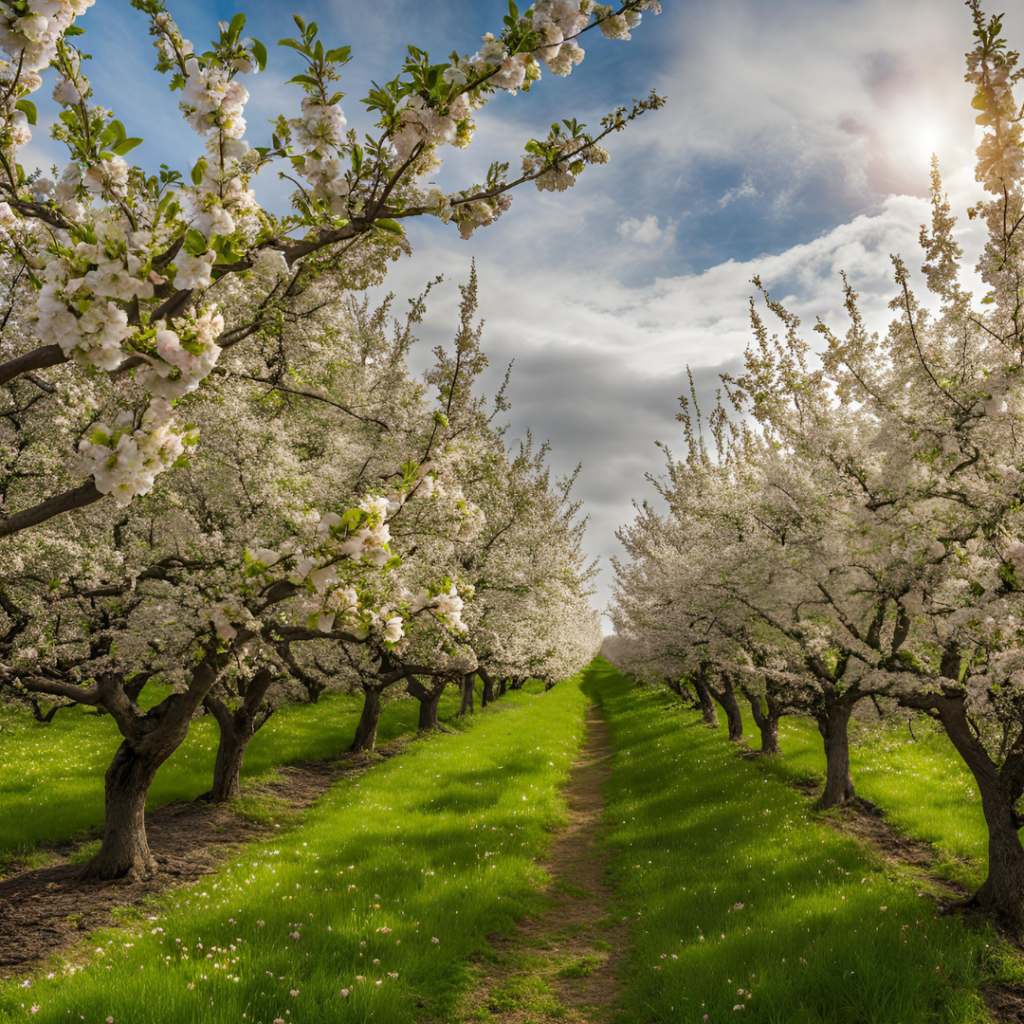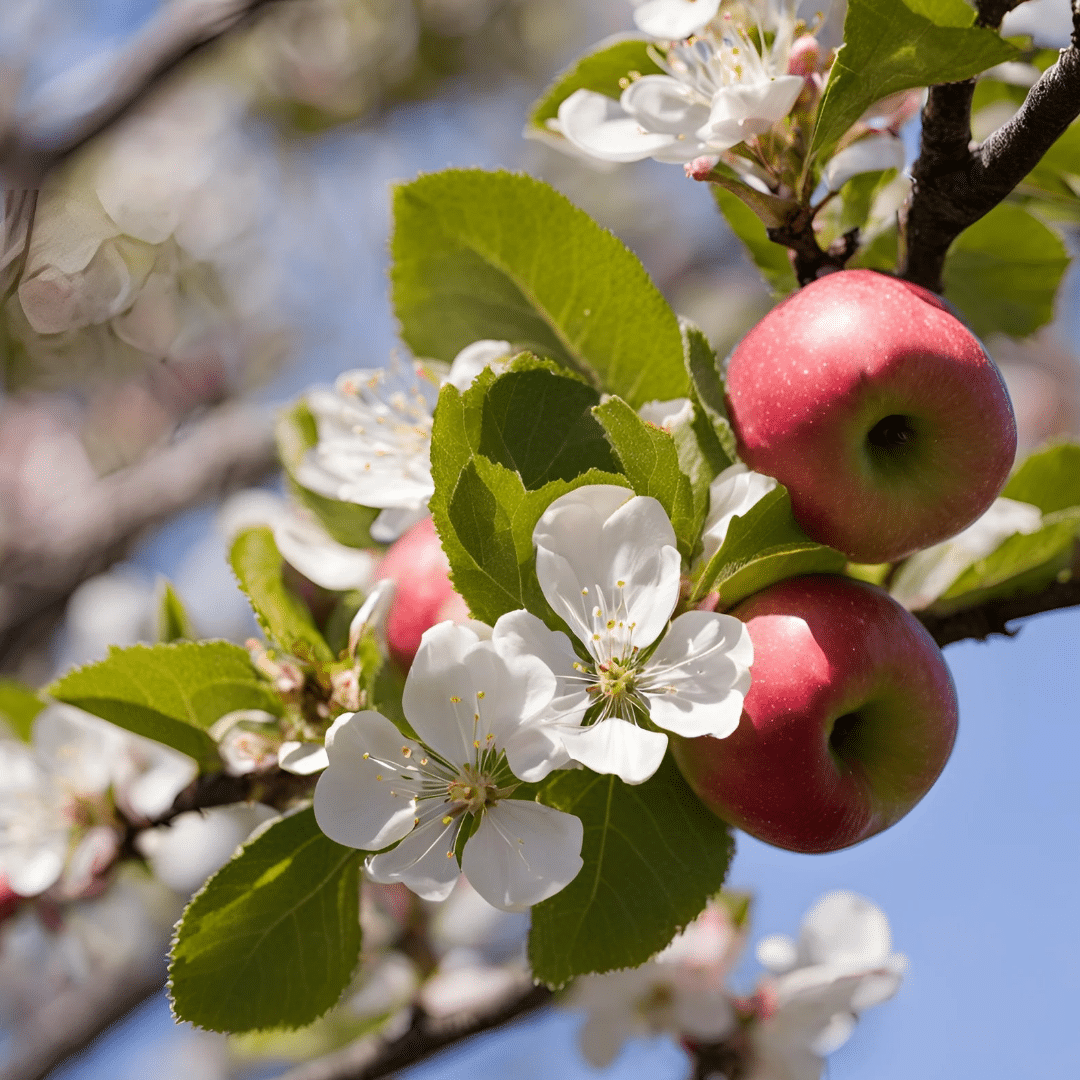When Do Apple Trees Bloom: Apple trees, known for their delicious fruit and beautiful blossoms, are a common sight in many parts of the United States and Europe. Understanding the blooming period of apple trees is crucial for gardeners, orchard owners, and even hobbyists who want to enjoy the sight of apple blossoms and ensure a good harvest. This article delves into the factors affecting apple tree blooming, the typical blooming periods in different regions, and tips for optimizing apple tree health to encourage proper blooming.
The Blooming Process of Apple Trees
The blooming of apple trees is a fascinating natural process that marks the transition from dormancy to active growth. This process begins with the development of flower buds, which usually start forming in late summer or early fall of the previous year. These buds remain dormant through the winter, protected by scales that shield them from cold temperatures.
As winter fades and temperatures begin to rise in spring, the flower buds start to swell and eventually open into blossoms. The precise timing of this bloom can vary significantly based on several factors, including the apple variety, climatic conditions, and geographic location.

Factors Influencing Apple Tree Blooming
- Apple Variety: Different apple varieties have different blooming times. For instance, early-blooming varieties like ‘Gala’ or ‘McIntosh’ may start to blossom in early spring, while late-blooming varieties like ‘Granny Smith’ or ‘Fuji’ may not bloom until late spring.
- Climate and Weather: The local climate plays a crucial role in determining the blooming period. Apple trees require a certain amount of chill hours (periods of cold weather) during winter to break dormancy and prepare for blooming. Unseasonably warm winters or late frosts can disrupt this process and affect the timing and success of blooming.
- Geographic Location: The region where the apple tree is grown significantly impacts blooming times. Apple trees in the southern United States or southern Europe typically bloom earlier than those in northern regions due to warmer temperatures.
- Tree Age and Health: Younger trees and those in poor health may have irregular blooming patterns. Ensuring that apple trees receive proper care, including appropriate watering, fertilization, and pest management, can promote healthy blooming.
Blooming Periods in the United States
In the United States, the blooming period for apple trees varies from region to region:
- Northeast and Midwest: In these regions, apple trees generally begin to bloom in late April to early May. The relatively cooler climate means that the trees receive adequate chill hours during winter, leading to a consistent blooming period in spring.
- Southeast: Apple trees in the southeastern United States may start blooming as early as late March to early April. The warmer climate accelerates the end of dormancy, prompting earlier blooming.
- Southwest: Similar to the Southeast, the Southwest’s warmer climate can lead to early blooming, typically from late March to early April.
- West Coast: In states like California, apple trees often bloom from early to mid-April. Coastal areas with more moderate temperatures might see slightly later blooming compared to inland regions.
Blooming Periods in Europe
In Europe, the blooming period for apple trees also varies based on geographic location:
- Northern Europe: In countries like the UK, Denmark, and Sweden, apple trees usually bloom from late April to early May. The cooler climate ensures that the trees have sufficient chill hours during winter.
- Central Europe: In Germany, France, and Poland, the blooming period is generally from mid to late April. The temperate climate in these regions provides an ideal balance for apple tree growth and blooming.
- Southern Europe: In warmer regions like Spain, Italy, and Greece, apple trees can start blooming as early as late March to early April. The milder winters lead to an earlier end of dormancy and an earlier bloom.
Tips for Encouraging Healthy Blooming
To ensure that apple trees bloom healthily and produce a good harvest, consider the following tips:
- Choose the Right Variety: Select apple varieties suited to your region’s climate. Consult local nurseries or agricultural extensions for recommendations on the best varieties for your area.
- Ensure Proper Winter Chill: Make sure your apple trees are exposed to adequate chill hours during winter. This may involve choosing a planting location that receives consistent winter cold or employing strategies like using shade cloths to reduce winter sun exposure.
- Prune Regularly: Regular pruning helps maintain the health of the apple tree and encourages better blooming. Prune in late winter or early spring before the buds start to swell.
- Provide Adequate Watering: Apple trees need consistent watering, especially during dry spells. Ensure the soil is well-drained to prevent waterlogging, which can damage roots.
- Fertilize Appropriately: Use balanced fertilizers to provide essential nutrients. Avoid over-fertilizing, as excessive nitrogen can lead to lush foliage at the expense of blooms.
- Protect from Pests and Diseases: Monitor for common pests and diseases that can affect apple trees. Employ integrated pest management (IPM) strategies to keep your trees healthy.
The Impact of Climate Change on Apple Tree Blooming
Climate change poses new challenges for apple growers in both the United States and Europe. Shifts in temperature patterns, increased frequency of extreme weather events, and altered precipitation regimes can all affect the timing and success of apple tree blooming.
- Warmer Winters: Milder winters can result in insufficient chill hours, delaying or disrupting the blooming process. This can lead to uneven blooming and reduced fruit set.
- Late Frosts: Unexpected late frosts can damage blossoms, particularly if the trees have bloomed early due to warmer temperatures. Protecting trees with frost blankets or employing wind machines can help mitigate frost damage.
- Drought and Water Stress: Changes in precipitation patterns can lead to drought conditions, stressing apple trees and affecting their ability to bloom and produce fruit. Implementing efficient irrigation systems and mulching can help conserve soil moisture.
- Pest and Disease Pressure: Warmer temperatures can increase the prevalence of certain pests and diseases. Staying vigilant and employing preventive measures are essential to maintain tree health.
Adapting to Changing Conditions
To adapt to the changing climate, apple growers can take several steps:
- Diversify Varieties: Planting a mix of early, mid, and late-blooming varieties can help spread the risk of frost damage and ensure a more consistent harvest.
- Improve Soil Health: Healthy soil supports robust tree growth. Incorporate organic matter, use cover crops, and employ sustainable soil management practices.
- Use Technology: Advances in agricultural technology, such as precision irrigation systems and climate monitoring tools, can help optimize growing conditions and reduce the impact of climate variability.
- Research and Development: Supporting and participating in research on apple breeding, climate resilience, and pest management can contribute to developing more resilient apple varieties and growing practices.
Conclusion
The blooming of apple trees is a captivating and crucial phase in the apple growing cycle. Understanding the factors that influence blooming and recognizing the regional variations in blooming periods can help gardeners and orchard owners plan effectively. By choosing appropriate varieties, providing optimal care, and adapting to changing climatic conditions, it is possible to enjoy the beauty of apple blossoms and ensure a bountiful harvest year after year.
Whether you are in the United States or Europe, the sight of apple trees in full bloom is a reminder of nature’s intricate rhythms and the rewards of diligent cultivation. With the right knowledge and practices, anyone can contribute to the thriving legacy of apple orchards and enjoy the fruits of their labour.
Visit Again !
